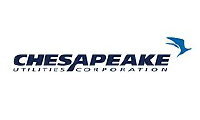 Emerging Growth
12 년 전
Emerging Growth
12 년 전
Morgan Stanley (NYSE: MS) recently released research that suggests it could take years for unemployment to reach a level that will prompt the Fed to finally raise rates. In December the Federal Open Market Committee established a rate of 6.5% as the target at which it will begin raising the Fed funds rate (currently 0 to 0.25%). The middle-of-the-road scenario, which assumes no change in the labor force participation rate (now 63.6%) and average job creation of 150,000 monthly, projects 6.58 years.
There are multiple variables, of course. A falling participation rate—which ironically enough would typically be prompted by a worsening economy—could bring unemployment to 6.5% sooner, assuming poorer conditions did not simultaneously crush job creation. Conversely, a rise in the participation rate back to the 2012 level of 64.2% would turn that 6.5 year timeline into 16 years if there were no corresponding improvement in job creation. The Fed’s own figures show unemployment falling by 0.22% annually if GDP growth is in the 2.25% to 2.75% range, which also puts 6.5% between five and six years away.
A predictable interest rate environment has many implications, but we’re going to examine what it means for a very capital-intensive industry: utilities. Aside from the direct benefit of low rates for financing equipment upgrades and expansion, with paltry rates on most fixed income investments a solid, dividend-paying sector like utilities becomes more attractive.
One candidate is Chesapeake Utilities Corp. (NYSE:CPK), not to be confused with the much larger Chesapeake Energy (NYSE:CHK). Chesapeake Utilities is engaged in natural gas and some electric distribution up and down the Eastern Seaboard from Delaware to Florida, and also operates natural gas pipelines in the Northeast. With low long-term natural gas prices, the lion’s share of new electrical generation is based on natural gas, and there is an opportunity to replace higher-priced home heating options like heating oil with cheaper and more environmentally friendly gas.
Chesapeake is now at a P/E of 17.1, slightly below the 18.5 of its peer group. What is striking is that its long-term debt to equity is 0.4 compared to 0.8 for its peer group and 1.1 for the industry. This means the company has the elbow room to accomplish infrastructure upgrades or expansion with inexpensive capital.
At this point the stock is only 2.15% off its 52-week high, its last close at 47.87, and for most of the first half of 2012 it traded in a range between 40 and 43. Consequently, it will need to come down slightly to be a bargain. Chesapeake is paying a 0.365 quarterly dividend.
Water is an increasingly contested resource in many parts of the world and even the U.S., particularly the West. One company providing water to what are essentially captive markets is Consolidated Water Co., Ltd. (NASDAQ:CWCO). Consolidated operates in Belize, the Bahamas, the Caymans, and the British Virgin Islands, providing retail and commercial water supplies with seawater desalinization plants. Thomson Reuters upgraded the stock on January 11, but it is still at a 4 out of 10 (the low end of neutral); Second Opinion upgraded Consolidated to Long on January 14.
At this point the stock is only 6.06% off its 52-week high but 27.31% off its 52-week low, so based on price performance over the trailing twelve months, it seems likely that Consolidated will head lower soon, at which point it will become a better buy. Its P/E of 19.2 is slightly below the industry average of 20.8, but more significantly, like Chesapeake Consolidated has minimal debt at this time. Total debt to equity is only 0.1 versus 3.3 for its peers, which means it is well-positioned to take advantage of low capital market rates.
Utilities in general have suffered from the weak housing market, but for companies like these that have low long-term debt ratios the current low-cost capital market offers an opportunity. Should either of them decide to leverage this opportunity, such a move would make them even more attractive.
See the full story and more here... http://emerginggrowth.com/investing_today/years-of-low-interest-rates-ahead-check-out-dividend-paying-utilities/01/24/2013

 Emerging Growth
12 년 전
Emerging Growth
12 년 전